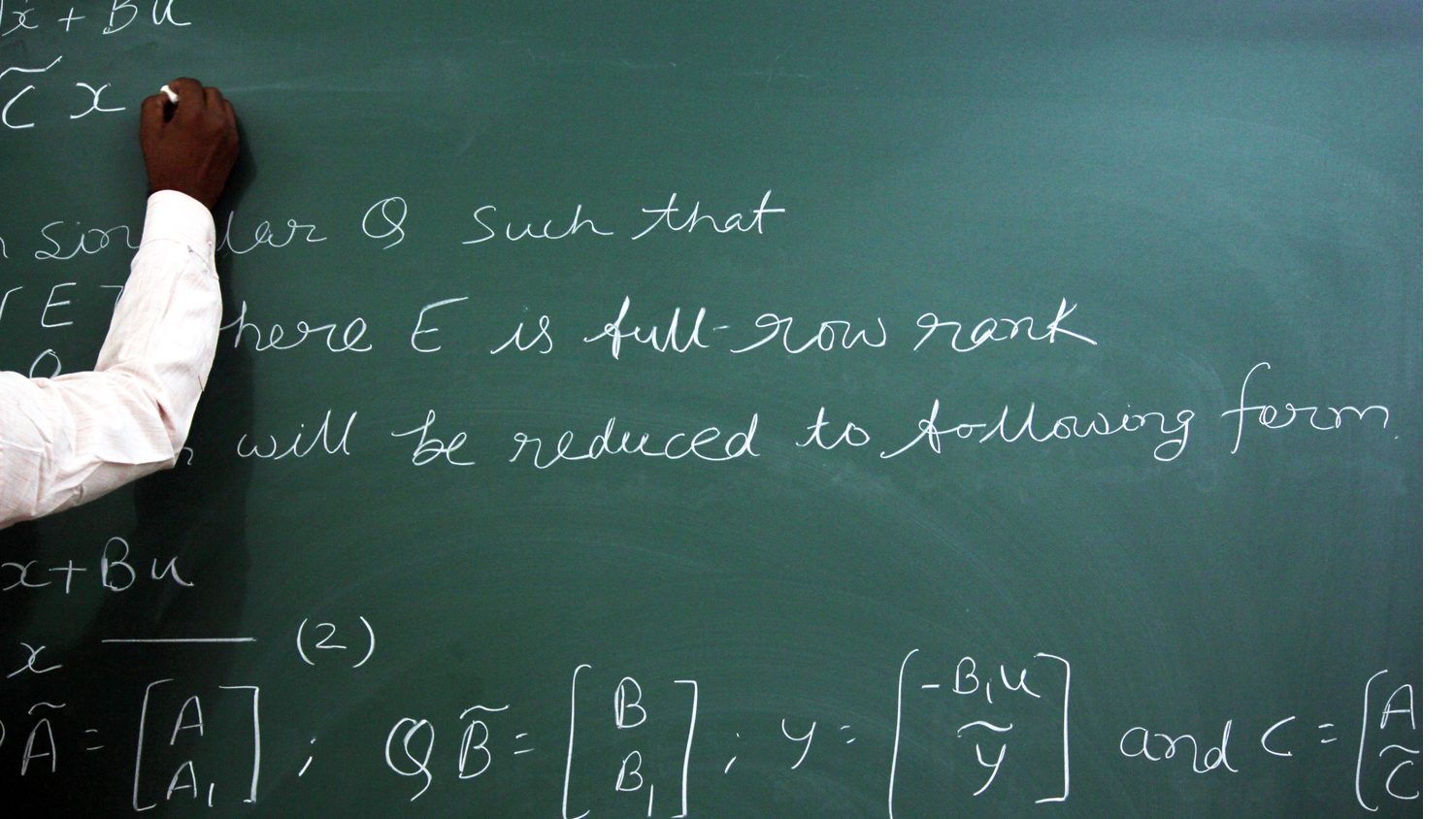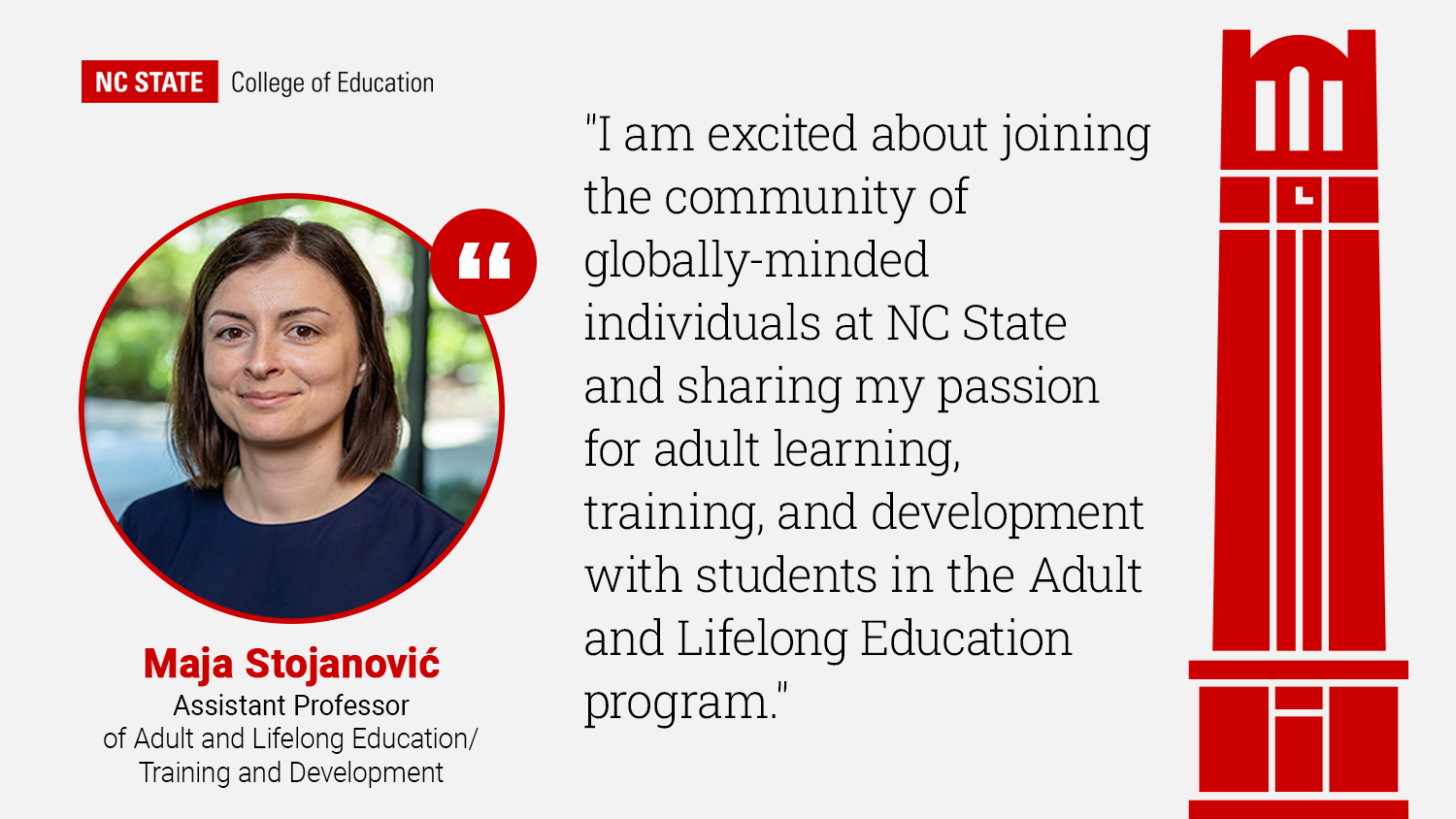Promoting Math Pedagogy

Jenna Regan ’07, ’13, MED,’ 15 MSA wanted to provide all her teaching colleagues in Person County the same level of preparation she received from Lee V. Stiff, a professor of mathematics education at the NC State College of Education.
[box]

Dig Deeper
[/box]
Stiff taught Regan how to make her instruction personal and engaging, prepared her for the challenges she would face as a mathematics teacher, and helped her realize that all students can learn a variety of mathematical concepts.
So Regan, the director of secondary education for Person County Schools, asked Stiff to provide professional development and coaching sessions for Person County teachers and applied for a grant to support the efforts.
That’s how Project C3M was born.
Project C3M — Cultivating Conceptual Teaching and Collaborative Learning of Rigorous Mathematics — is a partnership between Person County Schools and the College of Education that equips teachers with innovative mathematics instruction to improve student outcomes and help kindergarten through eighth grade students build a strong mathematical foundation.
“With Dr. Stiff, I began to truly understand the mathematics that had fascinated me before and recognized the need for conceptual teaching and learning in our public schools,” said Regan. “This project has helped teachers learn a variety of ways to present a topic, incorporate the mathematical practices into daily lessons, and use new tasks with students to foster conceptual understanding.”
Stiff leads the project, and Regan serves as its director.
“Our goal is to help students learn high-quality mathematics and to do better on the assessments they’re asked to take that demonstrate they know math,” said Stiff, who began serving as the College of Education’s interim associate dean of academic affairs July 1. “And they way to do that, we feel, is to make sure that teachers are working on all cylinders in terms of providing good instruction.”
The project, starting its third and final year in fall 2017, focuses on workshops where teachers examine their own practices and learn how to implement strategies that help students engage in mathematics at a higher reasoning and problem-solving level.
Professional development opportunities also cover how to talk about mathematics in the classroom and how to communicate ideas surrounding mathematical concepts or relationships. When teachers become more comfortable with these facets of mathematics instruction, they more easily pass on the understanding to their students, Stiff said.
Rob Herman, a fourth grade teacher at North End Elementary School, said he gained new insights on how students conceptualize math because of the Project C3M workshops. This has helped him better relay math concepts to the students, he said.
Because of that, he added, “I believe my students look at math differently, and are able to better apply the skills learned when solving mathematical problems, which require a higher level of problem solving.”
Herman also has deepened his knowledge of specific mathematical topics, which has allowed him to advance his pedagogy surrounding conceptual thinking, he added.
Specific areas that Stiff and the Project C3M team have focused on to strengthen teachers’ conceptual content knowledge are place value, fraction operations, and the concept of function, said Laila Thompson, a Ph.D. candidate in mathematics education at the College of Education working with Stiff on the project.
“These are areas that are critical for students’ understanding and performance,” she said. “If we can better equip teachers, and fill in any gaps in their knowledge, hopefully, we’ll see the progression of students’ knowledge and increase students’ performance within each grade level.”
Stiff believes that better performance through teacher professional development helps create a shift in the way people view students’ capabilities.
“My mantra is ‘all children can learn high quality mathematics,’ and what we do through professional development activities and conversations identifies reasons why that is true,” he said. “If teachers implement certain strategies, like engaging with students working in groups and sharing ideas, students begin to understand that they can ‘get’ math.”
Just as that was true for Regan, it has been true for Lesley Allen, a math teacher at Person County’s Stories Creek Elementary School who has participated in Project C3M workshops.
“My teaching has changed tremendously, and as a result, my students make the connections that so easily happen when math is taught correctly and conceptually,” she said. “It truly makes a difference in their ability to engage in high-quality mathematics learning and succeed on mathematics tasks, tests and in the classroom.”

Debranya Brower: What I Learned from Dr. Stiff Through Project C3M
In 5th grade, I began to fall behind because there were gaps in my knowledge of the content that were not met while I was in school. I struggled tremendously in the area of math, especially fractions.
When I made the decision to become a teacher, I was determined that I would not allow my students to struggle the way that I did. I think that because of the struggles that I had in math, coupled with the instruction from Dr. Stiff, I am a better educator.
Today I teach third grade. When subtracting, I would tell my students that 0-2 couldn’t be solved, so we would have to go to the next place value in order to “borrow” and complete the computation.
Dr. Stiff made me aware that once these students leave and go to upper grades, they struggle with integers because they have always been told that there are things they are unable or impossible to do.
Now, I have instructed my students, when we get to a similar computation, we say ‘NOT IN THIRD GRADE!’ They understand that although we do not do these types of computations in third grade, they will be coming in upper grades.
Dr. Stiff has helped me to see the bigger picture and not just my small piece of the puzzle. — Debranya Brower, a third grade teacher at South Elementary School in Person County
- Categories:


